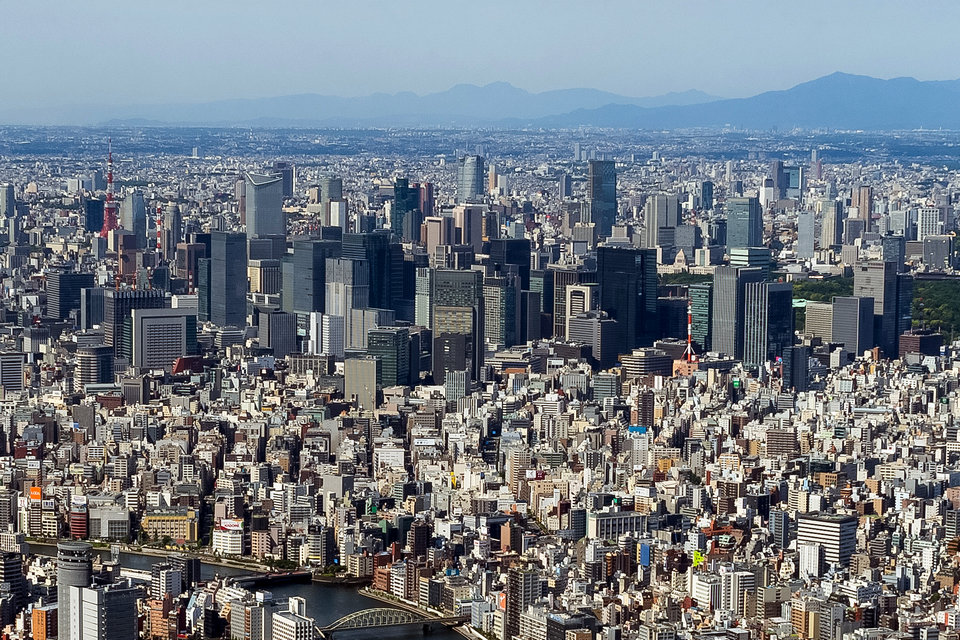Architecture of Tokyo


Architecture in Tokyo has largely been shaped by Tokyo’s history. Twice in recent history has the metropolis been left in ruins: first in the 1923 Great Kantō earthquake and later after extensive firebombing in World war II. Because of this, Tokyo’s current urban landscape is mostly modern and contemporary architecture, and older buildings are scarce.
Architecture in Tokyo has largely been shaped by Tokyo’s history. Twice in recent history has the metropolis been left in ruins: first in the 1923 Great Kantō earthquake and later after extensive firebombing in World War II. Because of this, Tokyo’s urban landscape consists mainly of modern and contemporary architecture, and older buildings are scarce. Tokyo features many internationally famous forms of modern architecture including Tokyo International Forum, Asahi Beer Hall, Mode Gakuen Cocoon Tower, NTT Docomo Yoyogi Building and Rainbow Bridge. Tokyo also features two distinctive towers: Tokyo Tower, and the new Tokyo Skytree, which is the tallest tower in both Japan and the world, and the second tallest structure in the world after the Burj Khalifa in Dubai.
Tokyo also contains numerous parks and gardens. There are four national parks in Tokyo Prefecture, including the Fuji-Hakone-Izu National Park, which includes all of the Izu Islands.
Tokyo has many museums. In Ueno Park, there is the Tokyo National Museum, the country’s largest museum and specializing in traditional Japanese art; the National Museum of Western Art and Ueno Zoo. Other museums include the National Museum of Emerging Science and Innovation in Odaiba; the Edo-Tokyo Museum in Sumida, across the Sumida River from the center of Tokyo; the Nezu Museum in Aoyama; and the National Diet Library, National Archives, and the National Museum of Modern Art, which are near the Imperial Palace.
Tokyo has many theatres for performing arts. These include national and private theatres for traditional forms of Japanese drama. Noteworthy are the National Noh Theatre for noh and the Kabuki-za for kabuki. Symphony orchestras and other musical organisations perform modern and traditional music. Tokyo also hosts modern Japanese and international pop, and rock music at venues ranging in size from intimate clubs to internationally known arenas such as the Nippon Budokan.
Skyscraper
Tokyo is the most populated of Japan’s 47 prefectures. In Tokyo, there are 49 buildings and structures that stand taller than 187 metres (614 ft). The tallest structure in the prefecture is Tokyo Skytree, a lattice tower that rises 634 metres (2,080 ft), which was completed in 2012. It also stands as the tallest structure in Japan, the tallest tower in the world and the 2nd-tallest freestanding structure in the world. The tallest building and third-tallest overall structure in Tokyo is the 256-metre-tall (838 ft) Toranomon Hills, which was completed in 2014. The prefecture’s second tallest building is Midtown Tower, which rises 54 stories and 248 metres (814 ft) in height. Overall, of the 25 tallest buildings and structures in Japan, 16 are in Tokyo.
Skyscrapers are a relatively recent phenomenon in Japan. Due to aesthetic and engineering concerns, Japan’s Building Standard Law set an absolute height limit of 31 metres until 1963, when the limit was abolished in favor of a Floor Area Ratio limit. Following these changes in building regulations, the Kasumigaseki Building was constructed and completed in 1968. Double the height of Japan’s previous tallest building—the 17-story Hotel New Otani Tokyo—the Kasumigaseki Building is regarded as Japan’s first modern high-rise building, rising 36 stories and 156 metres (512 ft) in height. A booming post-war Japanese economy and the hosting of the 1964 Summer Olympics helped lead to a building boom in Tokyo during the 1960s and 1970s. Construction continued through the 1980s and 1990s as the Japanese asset price bubble rose and fell. Mainland Tokyo is divided into two sections: Western Tokyo and the special wards of Tokyo. All of the prefecture’s tallest buildings are within the 23 special wards, which comprise the area formerly incorporated as Tokyo City. Nishi-Shinjuku, a district within Shinjuku, was the prefecture’s first major skyscraper development area. Starting with the construction of the Keio Plaza Hotel in the 1971, the district is now home to 12 of Tokyo’s 44 tallest skyscrapers.
Tokyo has been the site of many skyscraper construction projects in recent years. Since 2013, seven buildings rising higher than 187 metres (614 ft) have been completed. As of January 2018, seven such buildings are under construction in the prefecture. Several other construction projects planned to exceed the height of 187 metres are proposed for the near future.
Notable buildings
Tokyo Skytree
Tokyo Tower
Rainbow Bridge
National Diet Building
Yoyogi National Gymnasium
Tokyo Metropolitan Government Building
Tokyo Big Sight
Asahi Beer Hall by Philippe Starck
Tokyo Station
Tokyo International Forum
Roppongi Hills
Tokyo Imperial Palace
Akasaka Palace
Source From Wikipedia